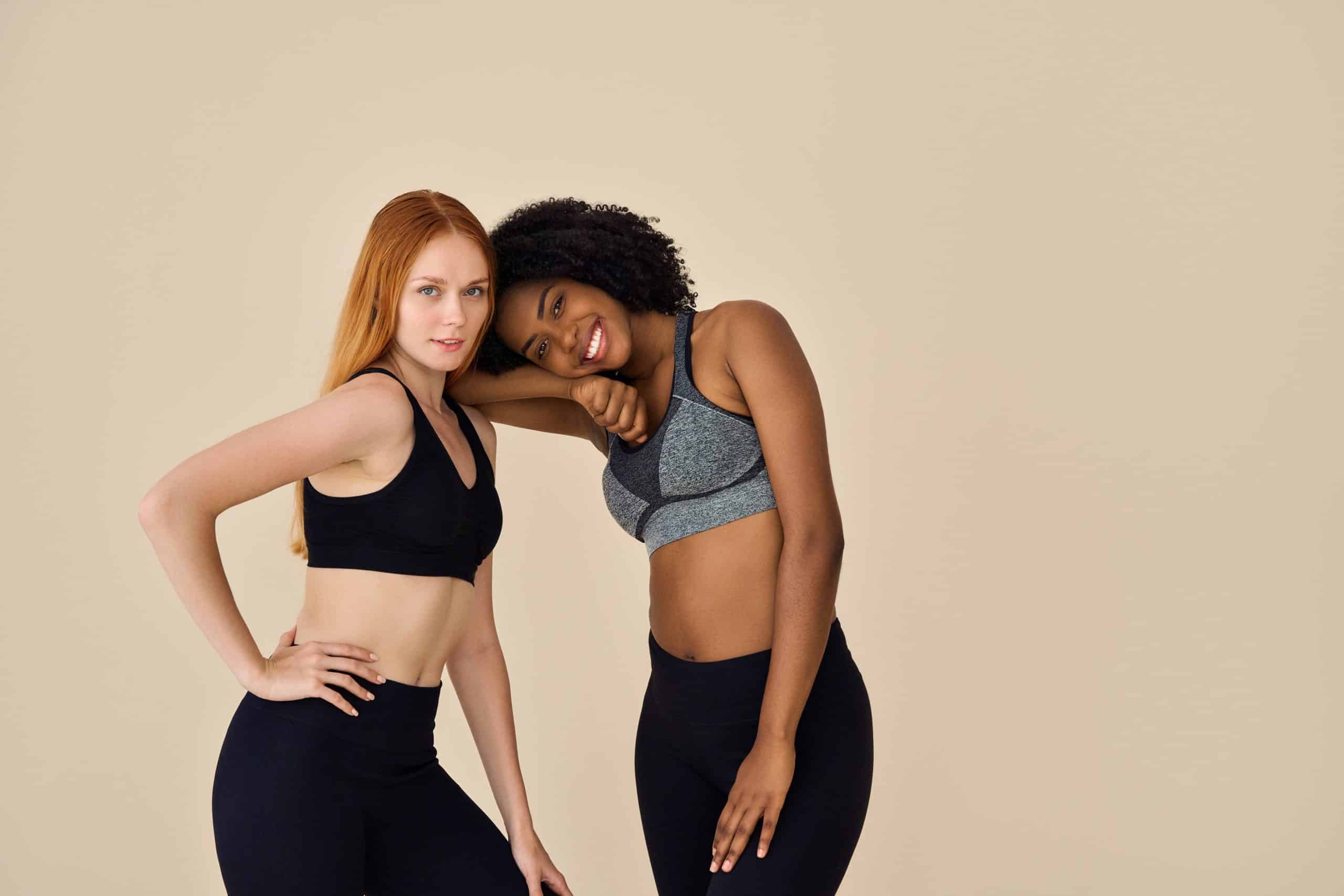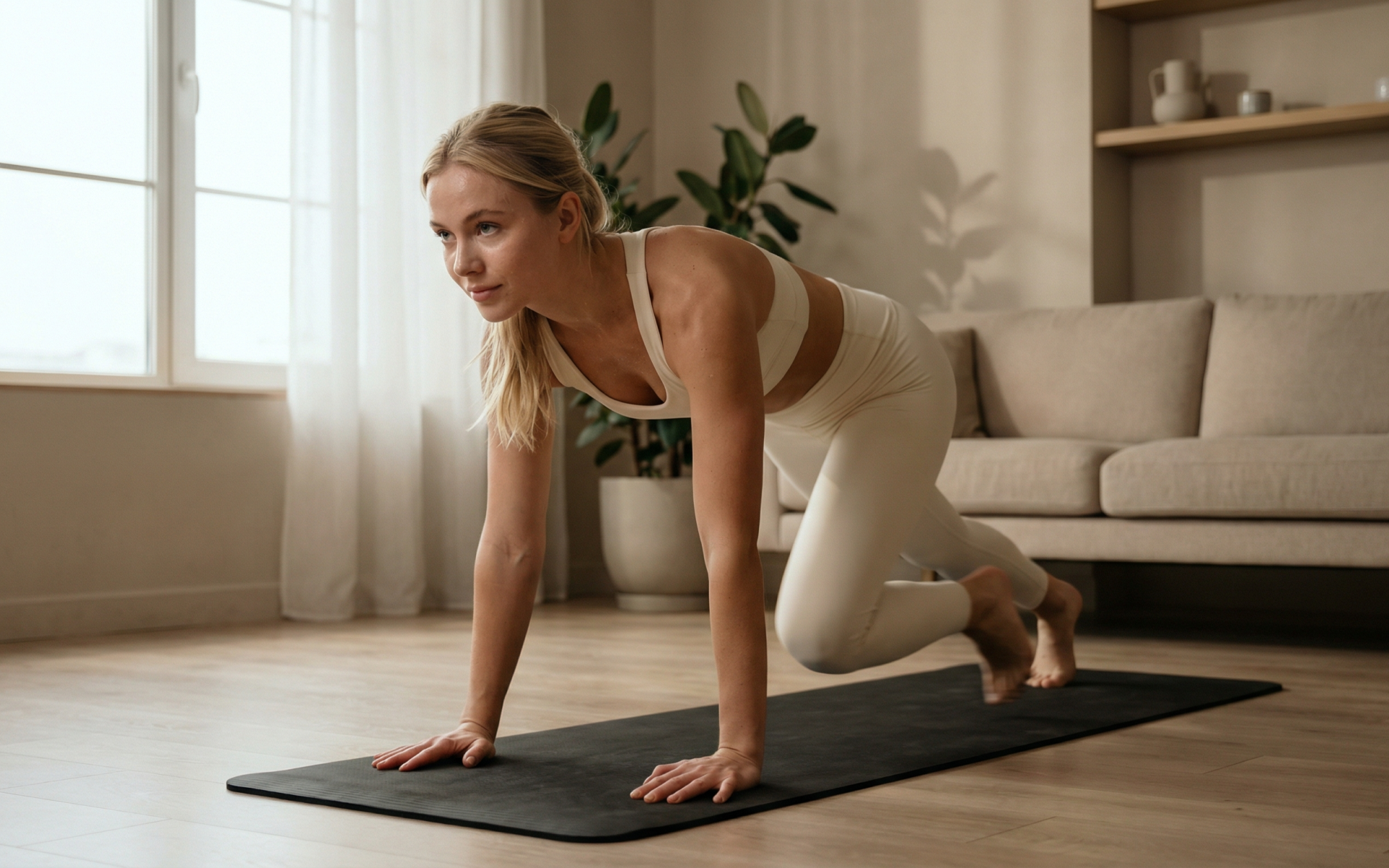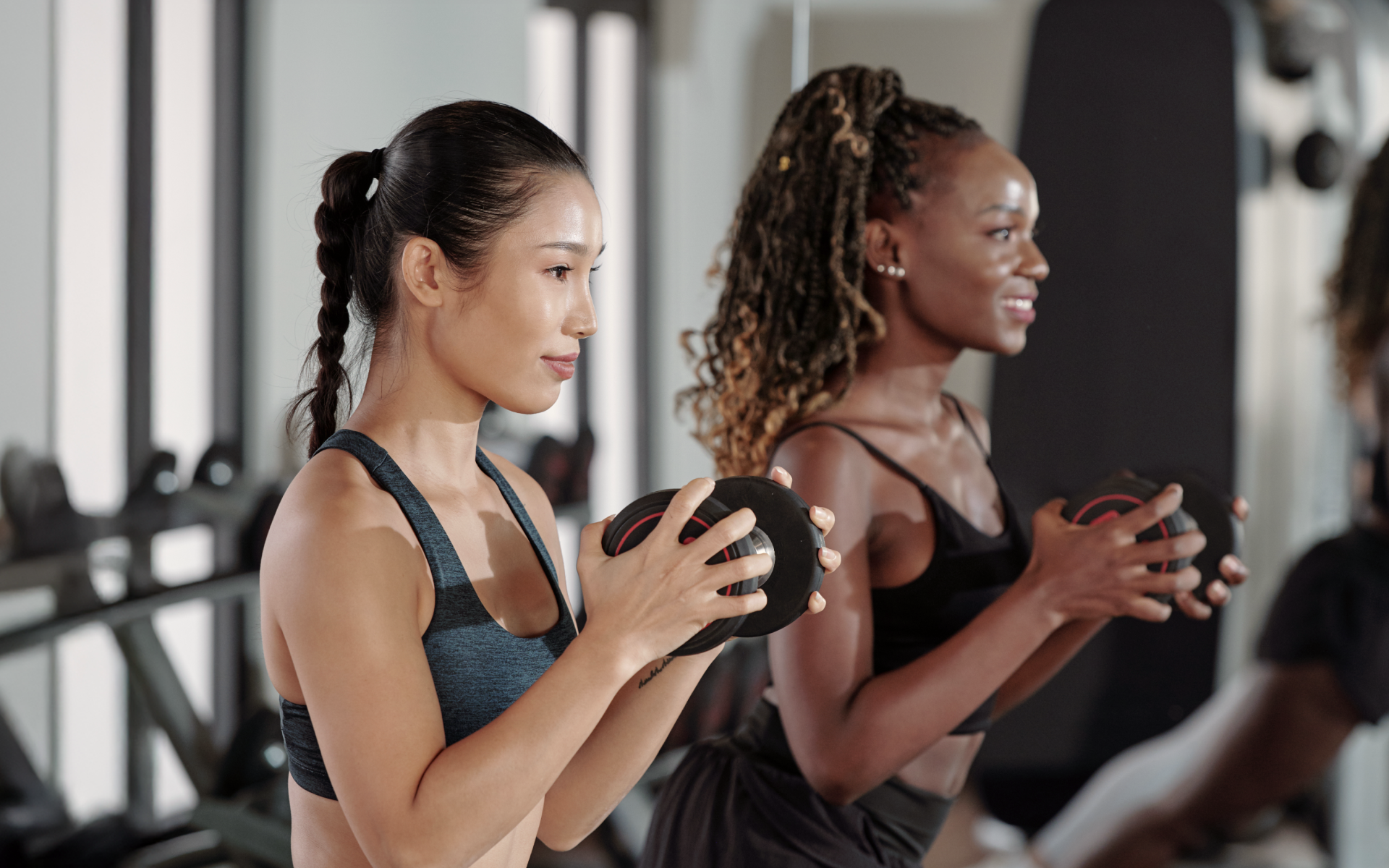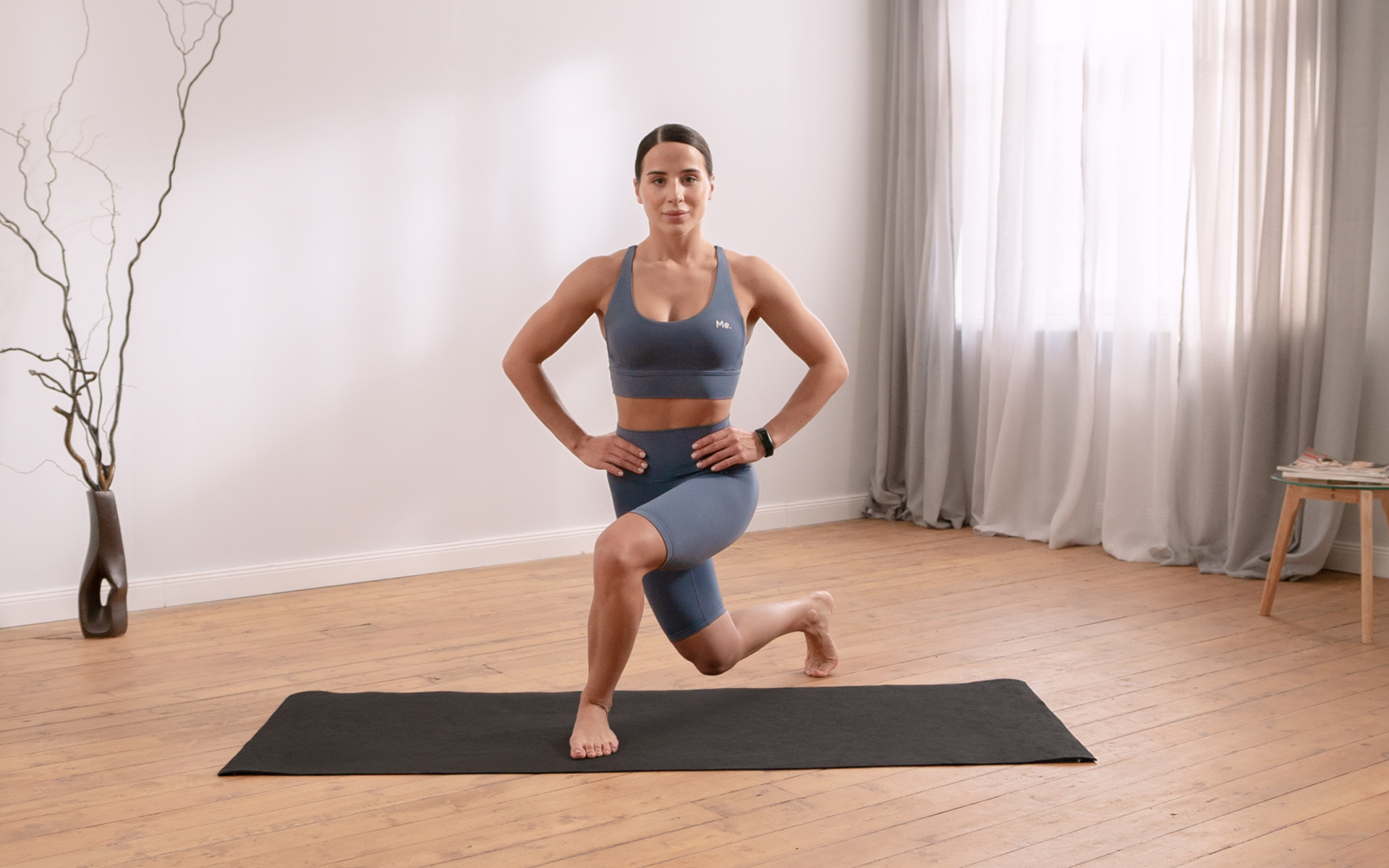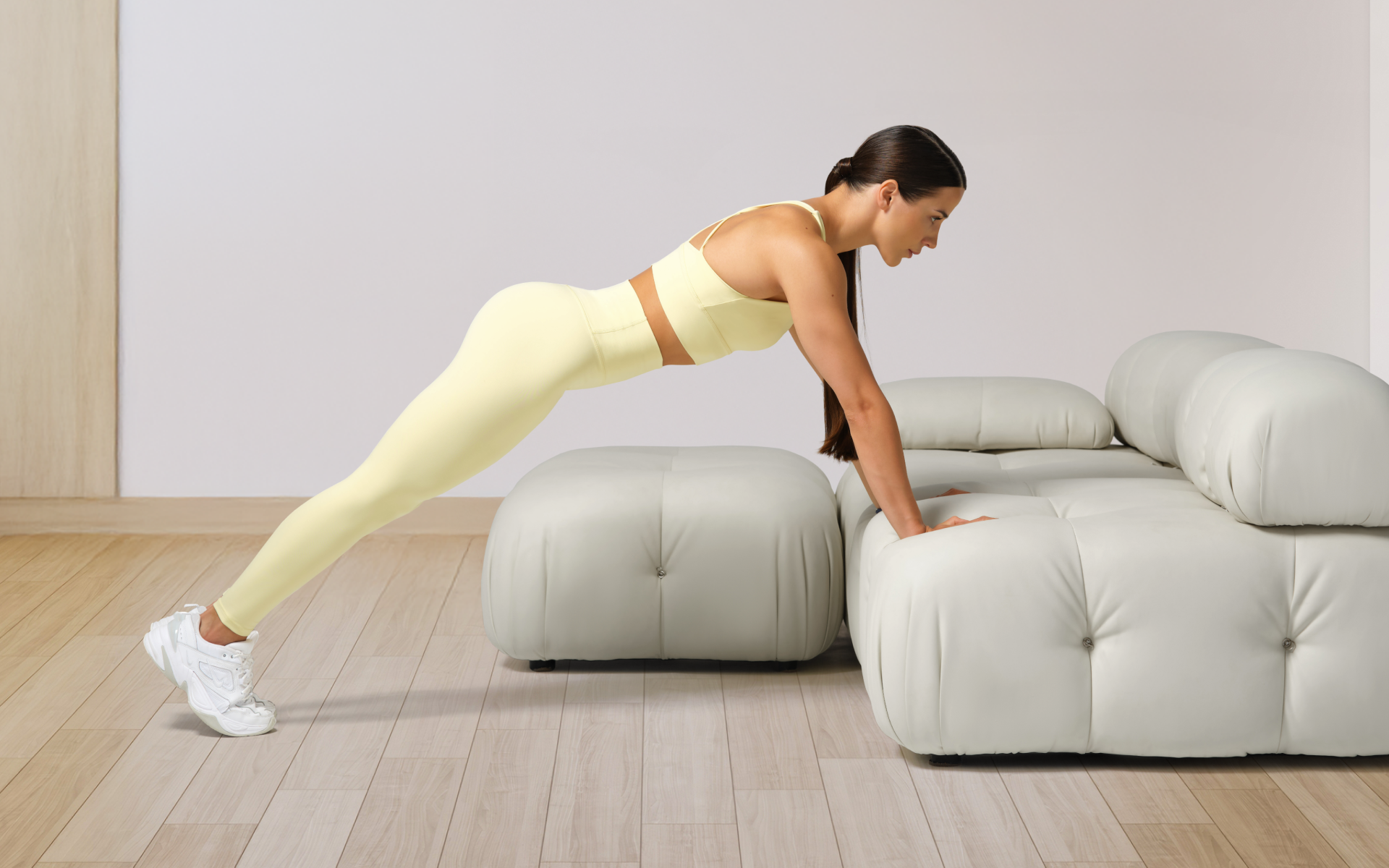Rowing is one of the fundamental movements, often referred to as pulling. Every day we engage our pulling musclfes to perform tasks like opening doors. It makes sense to train these muscles to be stronger and more efficient. Beyond functions, strong pulling muscles can build a strong back, bigger biceps and improve posture (3).
Unfortunately, most rowing exercises (think cable rows, barbell rows) require equipment that may not be readily available at home. Does that mean you can’t do effective rowing exercises at home? Certainly not.
Here’s how you can perform bodyweight rows at home with no equipment.
Can You Do Rows Without A Machine?
Yes, you can definitely do rows without a machine. In fact, bodyweight rows are an excellent alternative to traditional rowing exercises because they engage your core and stabilizer muscles in addition to your back muscles. These exercises also allow for a greater range of motion, which has potential to result in better muscle activation.
How To Do Bodyweight Rows With No Equipment
- Find a sturdy horizontal surface: Look for any stable object that is about waist height such as a table, bar or even a low-hanging tree branch.
- Set up: Stand facing the surface of it with your feet hip-width apart. Reach forward and grab the surface with both hands at shoulder-width apart. Keep your arms straight, chest up, engage your core and keep shoulders relaxed.
- Get into position: Walk your feet forward (under the table) while holding on to the stable object until your body forms a straight line from head to heels at about a 45-degree angle. The further you walk your feet under it, the more challenging the exercise will be.
- Pull yourself up: Engage your back muscles and pull your chest towards the surface while keeping your elbows close to your body. Your elbows should be pointing behind you as you pull yourself up.
- Hold for a second: Once you have pulled yourself up as far as you can, hold the position for a second or two to really engage your back muscles.
- Return: Slowly return to the starting position while keeping your body in a straight line.
- Repeat: Aim for 10-12 repetitions and 2-3 sets of this exercise. As you get stronger, you can increase the number of repetitions or make the exercise more challenging by elevating your feet on a bench or using one arm at a time.
BetterMe is your fast-track ticket to a long-lasting weight loss! Tailor your fitness journey and maximize your results with just a couple of swipes!
How To Do Rows With a Towel?
One way to do inverted rows at home without equipment is by using a towel, or bedsheet. The idea is to anchor your towel to a door, safely, and row away. Here’s how:
- Anchor the towel: Tie a knot in the center of a towel, drap the towel over the top of the door and close it. Both ends of the towel should hang forwards to form a Y shape. Please make sure the door is sturdy and can hold your weight before attempting this maneuver.
- Stand facing the door: Stand a few steps back from the door, with your feet hip-width apart. Grab onto both ends of the towel at shoulder-width apart.
- Get into position: Walk your feet forward until your body forms a straight line from head to heels at about a 45-degree angle. Your arms should be extended slightly overhead with tension on the towel.
- Pull yourself up: Use your back muscles to pull yourself up towards the door while keeping your elbows close to your body and pointing behind you.
- Hold for a second: Once you have pulled yourself up as far as you can, hold the position for a second or two to really engage your back muscles.
- Lower yourself down: Slowly lower yourself back down to the starting position while keeping your body in a straight line.
- Repeat: Aim for 10-12 repetitions and 2-3 sets of this exercise. You can make it more challenging by increasing the tension on the towel or using one arm at a time. You can also make it easier by using 2 towels and doing this from a seated position. This would require less core strength and stability to complete. But instead of tying the knot in the middle of the towel, you will tie the knot at the end of it so that the end of the towel away from the door is able to reach your hands when seated.
Where To Do Bodyweight Rows At Home?
Perform bodyweight rows at home in any space that allows for enough room to extend your arms and perform the exercise safely. This can include a living room, bedroom, or even a backyard. Just make sure the surface you are using is sturdy and secure.
Here are a few ideas for where to do bodyweight rows at home:
- Using a sturdy table or bar
- Using a towel and door combination
- Using a suspension trainer (if you have one)
- Using the edge of a staircase
- Using a low-hanging tree branch
Read more: Calisthenics Warm Up 101: Bodyweight Exercises To Get Your Blood Flowing Before Your Workout
Do Bodyweight Rows Work?
Bodyweight rows work by targeting your back muscles, primarily the lats, while also engaging your core and stabilizer muscles. Here are 8 solid benefits of doing bodyweight rows:
1. Improved Back Strength
Bodyweight rows are a powerful exercise for building back strength. This versatile movement primarily targets the latissimus dorsi, rhomboids, and trapezius muscles.
By regularly incorporating bodyweight rows into your training regimen, you can notice a significant increase in your overall back strength, which can translate into improved performance in other exercises and daily activities. A strong back also contributes to better posture and reduced risk of injuries related to muscle imbalances (2).
2. Enhanced Core Stability
When performing bodyweight rows, your core muscles are engaged to maintain a stable and controlled position. This activation strengthens the muscles of the abdomen and lower back, enhancing overall core stability.
A strong core is crucial for balance, stability, and even helps prevent lower back pain. In essence, bodyweight rows provide a two-for-one workout, delivering both back and core strengthening benefits (6).
3. Greater Muscular Endurance
Bodyweight rows also help with building muscular endurance. By aiming for higher repetitions, you train your muscles to withstand prolonged periods of contraction.
This can be particularly beneficial in enhancing your stamina for other physical activities such as running, cycling, and even swimming. The increased endurance gained from bodyweight rows can help to make your muscles strong and efficient during extended periods of activity (4)
4. Versatility and Convenience
One of the greatest advantages of bodyweight rows is their versatility and convenience. You don’t need a gym full of equipment to perform this exercise. All you need is a stable surface or a simple setup like a towel and a door.
This makes bodyweight rows an accessible option for almost anyone, regardless of where they are. Whether you’re traveling, working out at home, or in a park, you can always incorporate rows into your routine.
5. Improved Functional Strength
Functional strength refers to the ability to perform everyday tasks with ease. The pulling motion of bodyweight rows mimics many common movements, such as lifting a child or pulling open a door.
By strengthening those muscles and improving coordination, you’ll find that daily activities can become easier and less strenuous. This functional strength is key to maintaining independence and efficiency in your everyday life (1).
6. Enhanced Range of Motion
Bodyweight rows allow for a greater range of motion compared to some machine-based exercises. This increased range of motion can lead to better muscle activation and flexibility.
By regularly performing bodyweight rows, you can improve the flexibility and mobility of your shoulder and back muscles, reducing the risk of injury and enhancing overall physical performance (5).
7. Cost-Effective
Since bodyweight rows require minimal to no equipment, they are a cost-effective way to train your back and upper body. You don’t need to invest in expensive gym memberships or specialized equipment. This makes bodyweight rows an excellent choice for those seeking to get fit on a budget while still achieving effective and measurable results.
If you’ve mustered up the courage to crush your weight loss goal, let Betterme take the sting out of this demanding process. Our app will help you restructure your habits, remold your life and crank up your fitness results!
8. Adaptability to Progression
Bodyweight rows can be easily modified to match your fitness level, making them suitable for both beginners and advanced athletes. As you become stronger, you can make the exercise more challenging by adjusting the angle of your body, using a single arm, or adding extra resistance.
Here are some body weight row variations you can try, to make the exercise more challenging:
- Inverted rows
- Single arm rows
- Reverse grip rows
- Feet elevated rows
- Resistance band rows
Inverted Rows
Inverted rows are performed with your body in a more horizontal position, making them more challenging than standard bodyweight rows. This variation intensifies the resistance and targets your upper back muscles in an arguably more effective way .
Steps to perform inverted rows:
- Find a sturdy bar or edge of a table that can support your weight.
- Lie on your back underneath the bar/table and grab it with an overhand grip, hands shoulder-width apart.
- Your body should be straight with your heels on the ground and your arms extended.
- Bend your elbows and pull your chest up towards the bar, keeping your body stiff and your elbows pointed outwards.
- Pause at the top of the movement, squeezing your shoulder blades together.
- Slowly lower yourself back to the starting position.
- Repeat for 10-12 repetitions and aim for 2-3 sets.
Single Arm Rows
Performing rows with one arm increases the difficulty by requiring more from your stabilizer muscles to maintain balance. This variation also ensures that each side of your back is worked equally, which can correct any muscle imbalances.
Steps to perform single arm rows:
- Loop a towel or use a sturdy strap over a strong support, like a door.
- Grasp the towel with one hand and lean back until your arm is fully extended.
- Keep your body straight and engage your core.
- Pull yourself towards the support by slowly bending your elbow using your back muscles until your hand is near your chest.
- Hold briefly at the top, then slowly lower yourself back.
- Perform 8-10 reps on one side before switching to the other arm.
- Aim for 2-3 sets on each arm.
Reverse Grip Rows
Using a reverse (underhand) grip in rows targets the biceps more than other variations, making it an excellent compound movement for both your back and arm muscles.
Steps to perform reverse grip rows:
- Find a bar or edge of a table that can support your weight.
- Lie on your back underneath and grasp the bar with an underhand grip, hands shoulder-width apart.
- Extend your arms fully with your heels on the ground and body straight.
- Pull your chest up towards the bar, while bending your elbows and keeping them close to your sides.
- Pause at the top and squeeze your shoulder blades together.
- Lower yourself back down slowly.
- Repeat for 10-12 reps and aim for 2-3 sets.
Feet Elevated Rows
Elevating your feet increases the intensity of the bodyweight row by shifting more of your body weight towards your upper body, engaging your back muscles even more.
Steps to perform feet elevated rows:
- Place your feet on a bench or chair and position yourself under a sturdy bar.
- Grab the bar with an overhand grip, hands shoulder-width apart.
- Your body should form a straight line from shoulders to feet.
- Pull your chest to the bar while keeping your body rigid.
- Hold briefly at the top, then lower yourself slowly.
- Aim for 8-10 repetitions and 2-3 sets.
Resistance Band Rows
Utilizing resistance bands adds variable resistance to the movement, increasing the exercise’s difficulty as the band stretches. It also allows you to use an overhand or underhand grip when performing the exercise.
Steps to perform resistance band rows:
- Secure a resistance band to a sturdy anchor point at a low height.
- Hold the ends of the band and step back to create tension.
- Stand with your feet hip-width apart, knees slightly bent.
- Pull the band towards your abdomen, keeping your elbows close to your body.
- Squeeze your shoulder blades together at the top.
- Slowly return to the starting position.
- Perform 12-15 reps and aim for 2-3 sets.
Read more: 30-Minute Bodyweight Beach Workout for Beginners
Yes, you can build your body without equipment by performing bodyweight exercises like push-ups, squats, lunges, and of course, bodyweight rows. These exercises target multiple muscle groups and use your body weight as resistance to help you gain strength and muscle. Towel rows can be an effective way to train your back muscles without equipment. This exercise targets the lats and upper back muscles while engaging your stabilizer muscles for balance. However, it may not provide the same level of resistance as other variations, so it is best used as an accessory exercise. Safety precaution is also advised when using a towel as a support, ensuring that it is secured properly to avoid any accidents. To do a dumbbell row, follow these steps: Superman exercises target the back muscles, specifically the erector spinae muscles located along the spine. These exercises are performed by lying on your stomach with arms and legs extended, then lifting both arms and legs off the ground simultaneously. This movement engages and strengthens the back muscles and can also improve posture. Supermans can be done without equipment, making them a great addition to your home workout routine.FAQs
Can I Build My Body Without Equipment?
Are Towel Rows Effective?
How To Do a Dumbbell Row?
What Are Superman Exercises?
The Bottom Line
It is possible to perform bodyweight rows at home with no equipment. You can use a towel, a sturdy bar, or even resistance bands to target your back muscles and build strength.
The basic row movement can be modified and progressed to target different areas of your back, making it a versatile exercise for building strength and muscle. Ensure proper form and gradually increase the difficulty as you progress for optimal results.
Take precaution when completing these exercises and always contact a medical professional to be sure that your body is able to handle these exercises.
DISCLAIMER:
This article is intended for general informational purposes only and does not serve to address individual circumstances. It is not a substitute for professional advice or help and should not be relied on for making any kind of decision-making. Any action taken as a direct or indirect result of the information in this article is entirely at your own risk and is your sole responsibility.
BetterMe, its content staff, and its medical advisors accept no responsibility for inaccuracies, errors, misstatements, inconsistencies, or omissions and specifically disclaim any liability, loss or risk, personal, professional or otherwise, which may be incurred as a consequence, directly or indirectly, of the use and/or application of any content.
You should always seek the advice of your physician or other qualified health provider with any questions you may have regarding a medical condition or your specific situation. Never disregard professional medical advice or delay seeking it because of BetterMe content. If you suspect or think you may have a medical emergency, call your doctor.
SOURCES:
- Build a Strong Foundation with Functional Strength Training (2024,usu.edu)
- Effective exercises for building a strong back (2024,harvard.edu)
- Effect of an exercise program for posture correction on musculoskeletal pain (2015,nih.gov)
- Muscular Strength and Endurance (2016,healthlinkbc.ca)
- The Importance of Flexibility and Mobility (n,d,psu.edu)
- The real-world benefits of strengthening your core (2012,harvard.edu)
